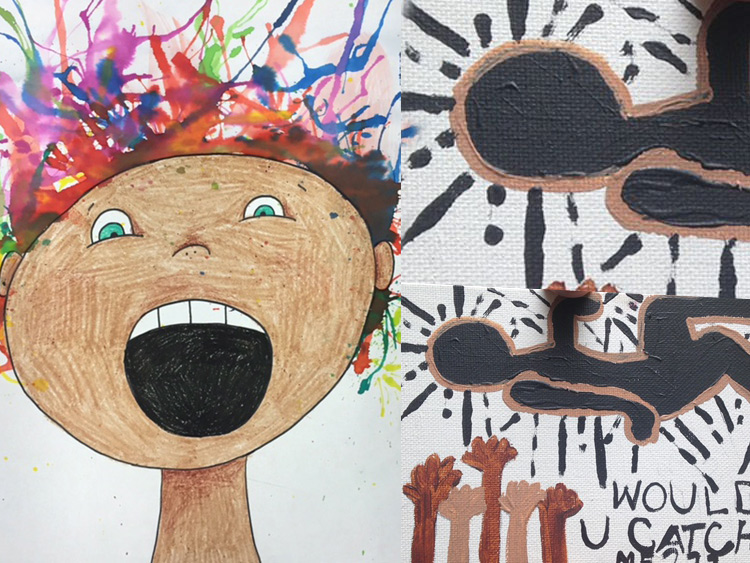Talk about it. Se habla español.

Art Therapy With Children and Teens
Art Therapy With Children and Teens:
Where Youth make social, emotional, and behavioral changes while having fun in the process.
Children love to make art; they are naturally creative and imaginative. As such, art therapy can be a more enjoyable and less threatening approach to treatment than traditional talk therapy. The art therapist will tailor art interventions, projects, and material choice to match the individual child’s unique preferences, needs, and goals. This means that art therapy will work differently for everyone. That being said, there are some overall concepts that can explain how art therapy works.
Art Therapy, Emotion Management, and Behavior Change
Sometimes it is difficult for children to find the words to accurately articulate what they are feeling. Without a way to express emotion, children might release painful or otherwise overwhelming feelings in inappropriate or unsafe ways. For example, anger might lead to aggression, sadness might lead to inattention at school, fear might lead to running away, etc. Expressing emotions in art allows children a cathartic release after which they feel a sense of ease. In this way children learn to use art as a coping skill to process emotions, so that they can feel empowered to show up in the world at their best.
Art Therapy, Stressful Life Events, and Trauma
Challenging life events such as divorce, death of a loved one, bullying, or trauma can impede a child’s capacity to function at their maximum potential. Some youth might feel intimidated or overwhelmed if asked to discuss these events directly. Addressing life challenges creatively and speaking through metaphor offers a level of distance from what might otherwise be overwhelming to address. Art making eases children into facing their challenges, beginning the process of acceptance and healing.
Art Therapy and Social Skills
Children and adolescents with poor social skills might be intimidated by verbal interaction, or else tend to play out socially inappropriate patterns when engaging verbally. To introduce artistic collaboration and creative team building exercises in an art therapy group is to utilize a language that all children enjoy and respond to. Since art is a fun language, one children haven’t developed inappropriate behavior patterns through, children can more effectively communicate and bond with their peers. Social skills concepts such as teamwork, reading social/emotional cues, listening, etc. are addressed as they arise in the group process to achieve learning through experience.
Art Therapy and Self Esteem
In art therapy youth are non-judgmentally heard and praised for any form of creation they make. The concept of “good” art does not exist, instead children are empowered to appreciate the uniqueness of their artistic voices. All children, regardless of artistic ability, learn to think of themselves as competent artists with something to say, which builds self-esteem and motivation.
For more information on how art therapy works feel free to contact Liat Alon, registered and board certified art therapist, at Liat@westvalleycounseling.org.

